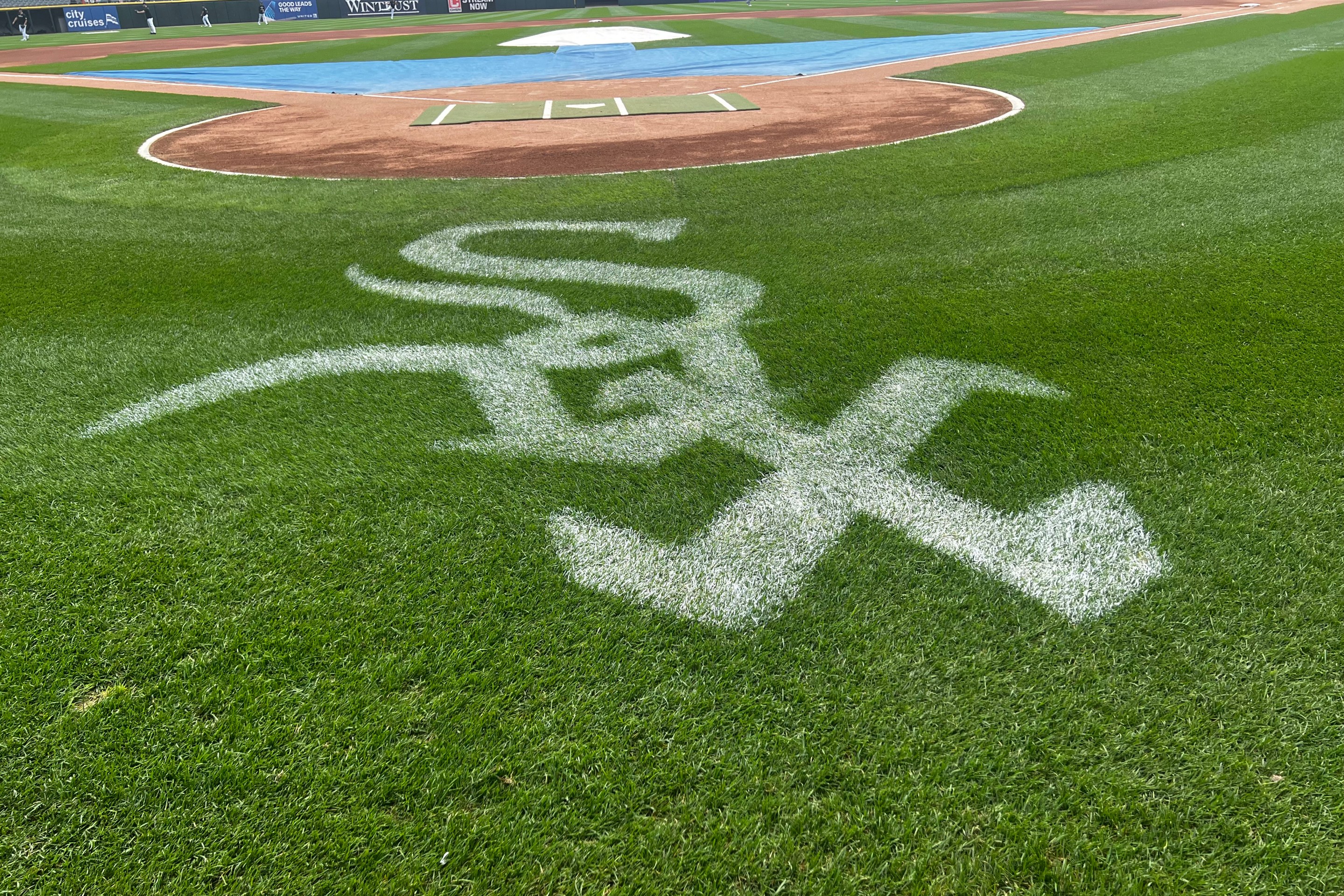Garrett Crochet's last name always looks a little lopsided on his jersey because the closed "4" the White Sox use for their numbering leaves a whole lot of blank space underneath the first two letters of "Crochet," while the full-width "5" escorts the second half of his name across the finish line.
Still, the new spring training template does him no favors.
With the old nameplate, the base of the "T" clears the width of the "5," which diminishes the asymmetry underneath. Compare that link to the photo above, where the smaller font of the controversial Nike templates makes it look like his name is crashing down into the number after an auspicious beginning.
Anyway, that's about the only thing that looked off about Crochet as he attempts to relaunch his White Sox career as a starting pitcher.
Crochet handled the first 1⅔ innings against the Dodgers at Camelback Ranch on Tuesday in scoreless fashion, including locking up Shohei Ohtani by dotting the corner with a fastball in his first plate appearance with the other Los Angeles team.
Camelback Ranch still isn't a Statcast site, but Chuck Garfien relayed that the stadium radar gun had Crochet sitting 97-99 mph with his fastball, and even reaching 100 against Ohtani. The way Crochet described it to James, that wasn't supposed to be a prominent part of his attack anymore, leading to three possibilities:
No. 1: Crochet is attempting to underpromise and overdeliver.
No. 2: He told James that his MLB debut velocity was the product of a long run-up to throwing competitively, and maybe he'll follow a similar course of surging early before settling in a tick or two lower.
No. 3: [Rob Thomas voice] Man, it's a hot gun. [/Rob Thomas voice]
Time (or Statcast) will tell, especially since hitters in the first week of spring training might not yet be up to speed. The Dodgers greeted Crochet with the best lineup they could run out there, and they couldn't turn around Crochet's fastball, although Teoscar Hernández was able to time a third consecutive four-seamer well enough to shoot a line drive the other way.
Talking to reporters after the game, Crochet responded to questions about the reinvigorated heat by saying he was happy to throw strikes with conviction, and that was indeed on display.
We might not have the official velocity readings, but because Crochet didn't spike any pitches into the ground, it was pretty easy to chart the pitch types and results over the course of his afternoon.
Garrett Crochet pitch chart
| Type | Pit | Str | Str L | Str S | Foul | In play |
|---|---|---|---|---|---|---|
| Fastball | 21 | 15 | 4 | 1 | 7 | 3 |
| Slider | 12 | 8 | 1 | 2 | 3 | 2 |
| Changeup | 1 | 0 | 0 | 0 | 0 | 0 |
| Total | 34 | 23 | 5 | 3 | 10 | 5 |
Basic strike-throwing was a challenge for Crochet last season. That's not unusual for pitchers returning from Tommy John surgery, and Crochet faced the additional challenge of dealing with a shoulder issue afterward. Whatever the factors, Crochet struggled to throw half of his pitches for strikes in his three September appearances after his lengthy IL stint, so clearing two-thirds in his first outing of 2024 was an encouraging display.
Crochet still has to get around to answering other questions about whether his arsenal is suitable for starting. He couldn't find the classic glove-side locations with his slider, often missing up and/or in, and the lack of a putaway pitch caused him to reach his limit before completing two full innings. He didn't seem to try his new cutter, and the one changeup he threw ended up off the plate to the right-handed Hernández.
One shouldn't expect Crochet to check every box in his inaugural appearances, of course. They're merely aspects to monitor when he returns to the mound for longer outings, along with wondering whether the big fastball has staying power. If he can resume touching 100, it increases the margin for error with his lesser pitches.
Two things about Colson Montgomery
White Sox shortstops drove in five of the team's six runs on Tuesday. Paul DeJong accounted for three RBIs with one swing by buggy-whipping a rolling curve into the left-field bullpen ...
... and Colson Montgomery had the other two. He turned a 3-0 pitch into a sac fly in the seventh inning, and then he showed his ability to hang with left-handed pitching with a line-drive RBI single off Justin Wilson in the ninth.
That's the kind of swing that makes evaluators think the bat can play at plenty of other positions, even if he isn't able to stick at shortstop.
As for why there are doubts about sticking at shortstop, Jason Heyward's sixth-inning single exemplifies the questions about Montgomery's playmaking ability. To pick one evaluation besides our own, the FanGraphs write-up of Montgomery said "most of what Montgomery is doing on defense happens too slowly," and Heyward's single is what that looks like.
It's not just the awkward, in-between attempt at a sliding stop, but the initial hesitation in his break to his right that immediately put him behind where he needed to be.
Just like we can soften enthusiasm about Crochet's spring debut by saying it's early, we can similarly couch criticisms of Montgomery, because he still might be getting his legs underneath him. However, if those are the types of misplays you see in May or June while his bat progresses full speed ahead, it's fair to wonder about whether his defensive future lies elsewhere.





